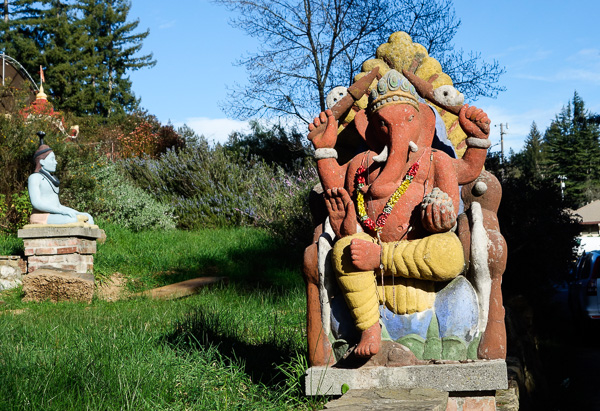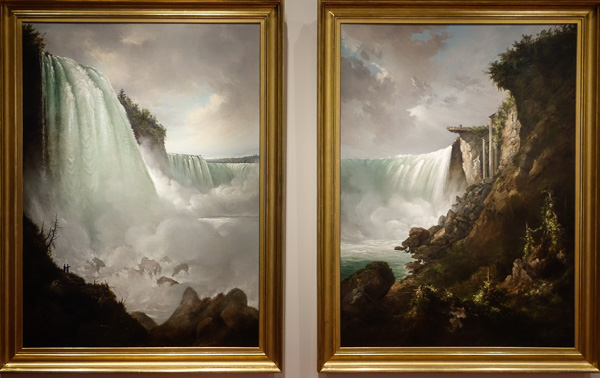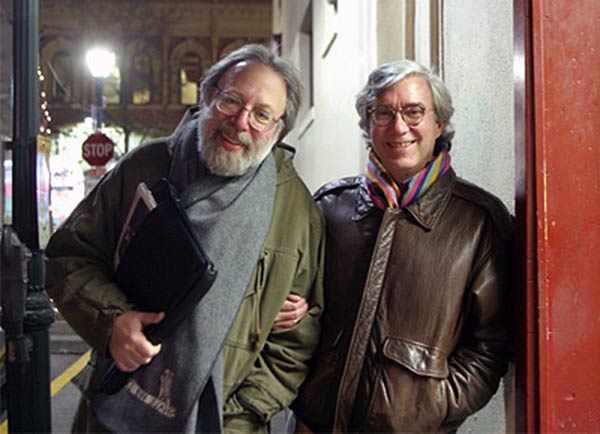Today’s long post is a guest shot from my old friend Lee Poague. Lee is a consummate movie buff, author of numerous books on Frank Capra, Alfred Hitchcock, Susan Sontag and others…you can see a list here.

Lee Poague on Four Mile Beach north of Santa Cruz, June, 2014.
Lee was a professor for many years at Iowa State University in Ames, Iowa, teaching courses on film. A few months ago, I asked him for a list of films he might recommend. And here we have his thorough, fascinating, and useful response, written on February 9, 2015, and entitled: “Film Talk and Friendship.” I’ve taken the liberty of giving titles to his essay’s three sections, and you can jump to the sections with the links below.
Part I: A Prolegomena To Any Future Film Recommendations.
Part II: Lee’s List.
Part III: Let Us Now Praise Kenneth Turan.
Part I:Prolegomena To Any Future Film Recommendations.
(by Leland Poague)
So one night Rudy asks me how to surf the streaming video movie wave, how to decide which films to watch out of the seemingly endless many on offer. Not the easiest problem to resolve or reduce. I’ll begin my reply with a story.
Our firstborn’s first social outing involved an April Sunday perambulator ride across North Street to attend a backyard picnic at Rudy and Sylvia Rucker’s home—in Geneseo, New York, 1976. Afterwards, I hauled a 16mm projector across the street and the Rucker front parlor became an impromptu screening room. We watched Billy Wilder’s Love in the Afternoon, one of the last films in my spring term film class.
Here’s another story. Toward the end of my university career I regularly taught a survey of film history course. To get started, I often asked students to give me a list of their five most favorite films. The results were striking. Rarely did any film receive a total of more than five or six votes, out of some 175 votes cast. And usually the top vote getter was a recent hit, Forest Gump, say, or Avatar. Few classic (aka black and white) films appeared on these lists, the most notable exceptions being Dr. Strangelove and Raging Bull, neither of them from Hollywood’s 1930s-40s silver screen heyday. Foreign-language films were rare; silent-era films were almost entirely absent. Some auteurs were relatively well represented—Coppola, Kubrick, Scorsese, Spielberg—which usually meant two or three titles per director. Otherwise, the dominant impression was of a happy cinephile anarchy.
The first story evokes an era when systematic knowledge of film history was hard to come by because few people had neighbors whose employment enabled them to order from 16mm film catalogues at the rate of two films a week. Apart from those with access to big-city revival houses or museums, most people circa the mid 1970s got their film history haphazardly from commercial television broadcasts. The second story also evinces an era of unsystematic knowledge of film history, to the extent that little consensus was evident in my class surveys, even for a generation raised on cable and VHS and DVD; their problem was less access than excess. So Rudy’s question is deeply pertinent, and is likely to become ever more complicated going forward.
The digital revolution that has helped to create the problem of too many movies and too little time also offers some remedies. Amazon.com makes suggestions based on a customer’s history of purchases; Netflix offers viewer ratings and allows friends to share title lists. The imdb website allows nearly instant access to director and actor and writer (etc.) filmographies; if you liked Ridley Scott’s Blade Runner, maybe you’ll enjoy his Prometheus. The catch here is that multiple lists, and lists of lists, can exacerbate the problem of finding films that really matter to you, assuming that film viewing is something other than a simple pastime. (I would not deny that randomness has its own rewards, and would allow as well that the impulse to shy away from purported classics, so as to avoid the imperatives of snobbery, is sometimes justified.)
Cut to the chase. I think the best way to find films that matter to you is to listen to those who have taken the trouble to understand and elaborate why particular movies have mattered to them, people whose memories and words can be checked against your own at crucial points in ways that make their assessments of film you have not seen yet both credible and suggestive.
Such recommendations carry the authority of thoughtful experience rather than that of academic or historical expertise alone, and they positively invite a thoughtful rejoinder, which may take the form of offering recommendations in return. With this guest post on Rudy’s blog, I’ll throw out some suggestions of my own to exemplify the process.
Part II: Lee’s List
(by Leland Poague)

Here are twenty movies I would recommend you see. Whether well known or obscure, all are films I would gladly see again, especially with companions whose varieties of engagement and response would test and renew my own.
Workers Leaving the Factory (1895). Usually described as the first film shot by the Lumière brothers with their cinématographe camera/projector device, this actually exists in three different versions, filmed in the spring and summer. The liveliness of these single-take, 50-some-second images is still astounding and reminds us of the degree to which animation, of human beings and technologies, is at the heart of cinema. To judge by the grins and gaits of the employees—most of them women—the Lumière factory in Lyon must have been a great place to work. (Though you can see these on You Tube, my favorite source is Kino Video’s The Lumière Brothers’ First Films DVD, as much for Bertrand Tavernier’s voice-over narration as for the quality of the images.)
The Kid (1921). This was Chaplin’s first self-directed feature-length film. Chaplin’s gift for Dickensian sentimentality is nowhere more evident than in the pathos of Charlie’s improvisatory relationship with Jackie Coogan’s foundling; Chaplin’s comical, sometimes surreal depictions of the brutalities of working-class urban life evoke many of D.W. Griffith’s early Biograph shorts and also the “modern” story of his 1916 epic, Intolerance. Though Chaplin’s extraordinary international celebrity made him fabulously wealthy, he never lost his sympathy for the dispossessed and disadvantaged.
Metropolis (1927). Purportedly the most expensive film ever made at the time of its initial 1927 release, Fritz Lang’s sci-fi masterpiece was subsequently and severely recut and exists in multiple versions, most recently a nearly complete restoration incorporating footage from a 16 mm print discovered in an Argentine film archive in 2008. Written by Lang’s then wife, Thea von Harbou, Metropolis combines gothic and futuristic elements in a dystopian fable of technology run socially and sexually amuck. Though the political allegory leaves the master/slave class structure ominously intact, the psychological extravagance of the Oedipal plot, and of Lang’s architectural treatment of its flows and surges, verges on hysteria if not ecstasy. Astonishingly, the almost complete 148 minute version of the film sustains this all-out momentum far better than its variously abbreviated avatars, even Giorgio Morodor’s 1984 rock-and-roll treatment.
The Crime of Monsieur Lange (1936). Few moments in the history of film are more resonant both of hope and despair than the scene towards the end of Jean Renoir’s Grand Illusion when Jean Gabin holds Little Peters in his arms and tells her widowed German mother (Dita Parlo) that “Lotte hat blaue Augen” just before Gabin and his fellow P.O.W. escapee (Marcel Dalio) depart Frau Elsa’s farmstead refuge and make their way to Switzerland and freedom. A similar moment marks the close of Renoir’s “Popular Front” comedy The Crime of Monsieur Lange. Headed down a windy beach toward the Franco-Belgian border, Amédée Lange (René Lefèvre) and Valentine Cardès (Florelle) stop in mid flight, turn, and wave to the camera, as if waving to us. (Gabin’s character dares not look back in Grand Illusion.) The implication that we are thereby members of the informal, working-class cafe jury that has effectively acquitted M. Lange of murder is confirmed in the reverse shot, in which two of their number acknowledge the gesture and return the salute. Justice here is ad hoc, as it will be three years later at the end of John Ford’s Stagecoach, when John Wayne’s escaped convict and Claire Trevor’s exiled saloon girl depart from Lordsburg for Mexico to start a new life beyond the reach of American law. That the self-effacing M. Lange is best known to his mid-thirties Parisian contemporaries as the author of the idealistic, anti-fascist “Arizona Jim” western stories confirms the uncanny Renoir/Ford affinity, as does the raucous good humor of the publishing cooperative that flourishes in the absence of the film’s villain-cum-publisher, whose return from presumed death leaves M. Lange little option but homicide and flight.
The Philadelphia Story (1940). Romantic comedy in ‘30s and ‘40s Hollywood attracted some of the industry’s most accomplished (and attractive) talents, both on screen (Carole Lombard, Clark Gable, Irene Dunne, Cary Grant) and behind it (Frank Capra, Howard Hawks, Preston Sturges, Billy Wilder). Director George Cukor’s smartly mounted production of the Philip Barry stage play features Grant along with Katharine Hepburn and James Stewart, all in top form; luminous, witty, surprisingly vulnerable. Many of the era’s screwball comedies featured cross-class romances, often a down-on-his-middle-class-luck male matched with a head-strong if erotically-befuddled heiress. The Philadelphia Story multiplies the possible pairings (Hepburn has three suitors, among them her alcoholic ex-husband) and takes any number of Freudian and Shakespearean chances in ruminating on what it means to be a “first class human being.” The importance of casting can be seen in the relative slackness of the film’s mostly agreeable musical 1950s remake, High Society, where Grace Kelly nearly manages to out sing Bing Crosby and Frank Sinatra both.

Notorious (1946). Alfred Hitchcock’s preeminence among studio-era directors is typically seen to follow from his preternaturally skillful manipulations of “suspense.” Psycho can be seen as Hitchcock’s definitive effort both to capitalize upon and to erase this expectation via the infamous lead-killing shower murder, which occurs strikingly early in the story. Like Janet Leigh’s Marion Crane in Psycho, Ingrid Bergman’s “notorious” Alicia Huberman is victimized by a desperately vengeful “Mother” figure, and also by variously neglectful if not callous patriarchs, both expatriate Nazis and US intelligence agents who use Alicia’s status as the reputedly dissolute daughter of a convicted German spy as a means of penetrating a Brazil-based Nazi sleeper cell engaged in the development of nuclear (implicitly weapons grade) materials. Casting Cary Grant as Bergman’s US contact turns the espionage plot into a love story pitched incongruously between romantic comedy and the Brothers Grimm, especially when Alicia’s cover is blown and her newly-espoused German husband (Claude Rains) and her manipulative live-in mother-in-law start dosing her coffee. That love is the antidote only confirms the extent to which love is always already a drug, and Hitchcock’s skill in balancing our desire that Alicia be rescued with our sympathy for her husband’s sad dignity in defeat yields a conclusion both poignant and disturbing.
My Darling Clementine (1946). John Ford’s The Searchers and The Man Who Shot Liberty Valance are more typically adduced in top-ten or top-twenty lists, not least because of the way Ford rubs John Wayne’s maverick (even psychotic) individualism against the grain of the community he ostensibly represents. There’s also a Henry Fonda strain in Ford, running from Young Mr. Lincoln to Mister Roberts, where Fonda’s visionary capacity for astonished thoughtfulness is typically underscored. My Darling Clementine slots Fonda into the Wayne role as an enforcer of (questionable) community standards, though the arrival of Clementine Carter (Cathy Downs) promises something like hopeful social change. Though Ford is a hard sell among undergrads these days, I still esteem him as the Shakespeare of cinema, not least for his career-long obsession with America’s history and mythology. The saloon scene where Fonda’s Wyatt Earp witnesses Victor Mature’s Doc Holliday completing Hamlet’s “To be or not to be” soliloquy when a woozy tragedian cannot go on is deeply evocative in its multiple pertinences and perspectives.
Tokyo Story (1953). The films of Yasujiro Ozu are nearly always parables of domestic discord, shifting delicately yet tellingly between the comic and the bittersweet. Tokyo Story is arguably as bitter as any film Ozu ever made. Aging parents venture from Onomichi to Tokyo “while [they] still can” to visit their Tokyo-resident children and grandchildren and the widow of their eldest son, who died in the Pacific War. The children, with the notable exception of the daughter-in-law, are too busy to entertain them, and every effort to remedy the resulting awkwardness only yields further embarrassment. Whether the grandmother’s death upon their (premature) return to Onomichi is attributable to the stress of the Tokyo visit is uncertain, though it requires the children to gather together in Onomichi for her funeral. Yet if bitter, also hauntingly sweet, in the loving precision of Ozu’s images and the curt (almost Beckett-like) irony of the script Ozu co-wrote with Kogo Noda. Though Ozu frequently alluded to American and European films in his own movies, his concerted attention to the specifics of Japanese social life—its settings and gestures and rhythms—discovers a world quietly replete with significance and love, even something like hope.
Pather Panchali.(1955). Though the productivity of Bollywood has long rivaled or exceeded that of Hollywood, Satyajit Ray’s Pather Panchali (like his career more generally) stands apart from the melodramatic glitz of the mainstream Indian film industry, and this despite the fact that Ray openly acknowledged being inspired by European and American auteurs with wide popular appeal: Jean Renoir, Vittorio De Sica, Frank Capra, John Ford. I have not yet seen the other two films in The Apu Trilogy, of which Pather Panchali is the first installment, but my one encounter with Pather Panchali haunts me still: for its leisurely, lilting pace; for its detailed depiction of a rural Indian village; for the poignancy and lyricism of key sequences, where the forces of urbanization (in the form of a railroad) uncannily intersect with the cycles and spaces of rural life. Where De Sica’s Bicycle Thieves follows a father and son through Rome in search of the bike upon which their family’s livelihood depends, Pather Panchali stays at home with the family while the father seeks to recoup their sagging fortunes in a too-distant city. Ray’s depiction of the resulting hardships, especially those affecting the family’s women, is quietly heartbreaking.
Wild Strawberries (1957). I came of cinematic age one weekend afternoon in the late 1950s when my widower father deposited myself and my younger brother at a neighborhood San Francisco movie house; while Dad went pub crawling with his younger brother, Dennis and I watched a double bill of Ingmar Bergman’s The Seventh Seal and The Virgin Spring. (Bergman as baby-sitter!) Though the only film I recall my father ever enthusing over was Hitchcock’s Vertigo, I wish I could have shown him Wild Strawberries, for its caustic if finally sympathetic portrait of an aging doctor whose coldness to those closest to him is softened by a series of psycho-expressionistic encounters with his past and the influence of a trio of youthful hitchhikers he picks up as he and his mournfully severe daughter-in-law drive to Lund, where he is to receive an academic honor. Though Bergman’s view of adult life is generally brutal in its depicted refusals and betrayals, as in Persona or Shame, Wild Strawberries contains that skepticism within a Proustian framework where memory allows some room for insight and reconciliation.

Rio Bravo (1959). Though it lacks the classical-Hollywood snap of Only Angels Have Wings and To Have and Have Not—films often described as its prototypical predecessors in an informal “existential” trilogy—Rio Bravo remains the definitive Howard Hawks film, evoking a world of teamwork both professional and sexual, in front of the camera and behind it as well. Angie Dickinson’s poker-playing widow is the Hawksian Woman par excellence, prizing her freedom but open to attachment, while John Wayne is the laconic lawman whose emotional reticence is increasingly called into question while he endeavors to hold a murder suspect in custody despite extra-legal efforts by the latter’s cattle-baron brother to spring him. The casting of Walter Brennan, Ricky Nelson, and Dean Martin lent the film a weird, television sit-com vibe at the time of its initial release, but its self-consciously reflexive qualities, at least in retrospect, evoke both Brecht and Beckett as Wayne’s besieged sheriff and his crew of cast-off deputies await a Federal Marshall who never arrives.
La Jetée (1963). Chris Marker is chiefly remembered as a documentarian, though his left-political leanings and essayistic procedures extend the documentary form far beyond journalistic “realism.” La Jetée is a speculative fiction composed largely of still images accompanied (in signature Marker style) by voice-over commentary. The rebus-like story we encounter—of a prisoner haunted by childhood memories of an airport, a woman, and a shooting—recalls Renoir’s Charleston Parade (in depicting Paris as a post-apocalyptic wasteland) and directly evokes Hitchcock’s Vertigo (in using a sequoia cross section as a temporal map). The prisoner’s memory-encouraged capacity for time travel, tested in repeated experimental journeys to pre-WWIII Paris, is employed by his jailors to solicit emergency assistance from the distant future. At risk of execution after the successful completion of his mission, he eschews the invitation of the world to come and chooses, instead, to return to pre-war Paris, where death is imminent but life beckons in a woman’s glance. Terry Gilliam’s Twelve Monkeys is only one of several films inspired by Marker’s 27-minute masterpiece.
Alphaville (1965). This film’s sub-literary subtitle, “a strange adventure of Lemmy Caution,” confirms Jean-Luc Godard’s abiding agent provocateur interest in the intersections of popular and canonical cultures. Alphaville (actually Paris and environs) is a futuristic city where life is lived according to the dictates of an omnipresent (and strangely poetic) super computer, “Alpha 60.” Lemmy Caution (Eddie Constantine, an American actor who’d played the same gumshoe character in numerous European genre films) is a James Bond style intergalactic secret agent tasked to kidnap Professor von Braun (aka Leonard Nosferatu), the father of Alpha 60; in the event, Lemmy plugs the professor with his film noir automatic, disables Alpha 60 with a riddle (effectively, the film itself), and rescues the professor’s beautiful daughter while Alphaville descends into entropic chaos around them. References to the holocaust (several female characters sport tattooed ID numbers) effectively conflate WWII and the Cold War, but the delirious modernist poetry of Godard’s dialogue and images—especially via the rapturous voice and face of Anna Karina—invokes the can-do romantic courage of Bogart and Bacall (“Je … vous … aime”) on a mythic, interstellar scale.
The Chase (1966). It is hard not to read this flawed Arthur Penn masterpiece as a post-Camelot retort to the optimistic existentialism of Rio Bravo, given that Angie Dickinson plays the wife of a latter-day Texas sheriff whose efforts to contain the violence unleashed by a local cattle-country corporate grandee (E.G. Marshall) in his anxious efforts to determine the fate of a (sexually) reckless relative (a son here, a brother in Rio Bravo) literally and spectacularly blow up, with tragic effects in The Chase evocative of the Kennedy assassination’s aftermath. With Marlon Brando as the put-upon sheriff, Robert Redford as an escaped convict suspected of murder, Jane Fonda as the latter’s wife and paramour of the grandee’s son—other noteworthy cast members include Miriam Hopkins and Robert Duvall—The Chase provides an extraordinary anthology of late-Hollywood acting styles, while the sheriff’s “innocent until proven guilty” efforts to place the Redford character in protective custody before local vigilantes discover his whereabouts evoke an out-of-place idealism that will migrate to the far side of the law in Penn’s next film about young runaway Texans, Bonnie and Clyde.
Last Tango in Paris (1972). A ghostly antagonist in many of Bernardo Bertolucci’s distinguished films (1900, The Last Emperor) is History, in a Marxian sense, evoking the operatic if not apocalyptic legacy of Luchino Visconti, as in Senso, say, or The Damned. A second obvious influence, especially in Last Tango, is Jean-Luc Godard, here personified in the film director played by New Wave stalwart Jean-Pierre Léaud whose willingness to live the clichés of bourgeois romance (“la marriage pop”) while simultaneously filming them (“If I kiss you, it might be cinema”) stands in sharp (if progressively muted) contrast to the psycho-social agonies of the Marlon Brando character, who seeks to temper the emotional impact of his French wife’s recent suicide by engaging in compulsive, no-names sex with the flower-child stranger played by Maria Schneider. The Brando character revolts against a patriarchal/theological status quo (the “Holy Family, Church of good citizens”) by openly enacting a brutality at its heart, only to discover its libidinal appeal. Like the Belmondo character in Godard’s Breathless, Brando’s character pays for his romantic idealism with his life; in both cases, it’s a young proto-feminist woman who’s tasked to confront (or not) the last-minute consequences. Vittorio Storaro’s slab-of-color lighting schemes evoke the Francis Bacon paintings seen in the film’s credits, while the film’s mise-en-scène of empty rooms and shadowy hallways intimates the void in which Bertolucci’s characters play out their scenarios of egotistic indulgence and social alienation.

Small Change (1976). The inevitable comparison of François Truffaut and Jean-Luc Godard nowadays favors the latter, though Truffaut’s first three feature films—The 400 Blows, Shoot the Piano Player, Jules and Jim—represent a debut with scant precedent in terms of cinematic quality and film-historical impact. Small Change is “late” Truffaut (alas!) but it expresses great tenderness with cinephile wit and precision in depicting the last few weeks of the school year in the city of Thiers mostly from the vantage point of adolescent (or nearly adolescent) children. The communalist influence of Jean Renoir is evident in the way the stories of numerous children and their (sometimes single) parents interlock, especially those of Julien Leclou (whose tattered clothes and petty thievery evince his troubled family circumstances) and Patrick Desmouceaux (whose motherless existence renders his path toward sexual maturity serially awkward). Though Truffaut is sometimes assailed as apolitical (or worse), Small Change repeatedly depicts cinema as treating political issues (a newsreel account of the still-fraught relations between France and Algeria) and as showing how such issues intersect with familial/aesthetic concerns (in a later newsreel account of Oscar the whistler and his mixed linguistic heritage). A teacher’s idealistic end-of-term address on generational injustice and the logic of love, nearly Shakespearean in its folkloric compression and wisdom, is touchingly earnest.
Rhapsody in August (1991). Given Akira Kurosawa’s influence on Sergio Leone, George Lucas, and Martin Scorsese—not to mention Rashomon or his various Toshiro Mifune film noirs—he is arguably the most influential director since D.W. Griffith or Sergei Eisenstein. Rhapsody in August is late Kurosawa, reminiscent of Tokyo Story in its study of a family stressed by generational tensions and the legacy of the Pacific War, though here the family lives both in Nagasaki and Hawaii rather than Tokyo and Onomichi. Richard Gere plays a nisei American cousin who travels to Japan after the death of his Japanese-born father to visit his elderly aunt and her teenage grandchildren. Family reconciliation entails confronting the legacy of the atomic bomb that killed the grandmother’s husband in 1945. Though often light and comic in its treatment, key moments evoke the manic energies of The Seven Samurai and the lyric expressionism of Akira Kurosawa’s Dreams.
The Piano (1993). One of the few women ever nominated for an Academy Award for Best Director, Jane Campion is widely respected for her exceptionally intelligent depictions of heroically exceptional women. Holly Hunter’s Ada McGrath is willfully mute, as if her passion for the expressiveness of piano playing betrayed her aversive disappointment with social discourse under 19th-century patriarchal circumstances. Campion’s depiction of white settlers in New Zealand contrasts their puritanism with more relaxed Maori attitudes; Ada’s audacious sexual reawakening—she already has an out-of-wedlock daughter (Anna Paquin) when her Scottish father ships her off to New Zealand to marry—is prompted by Harvey Keitel’s American ex-whaler gone native, who rescues her piano from its shoreline exile. Campion’s romantic portrait of New Zealand’s island geography contrasts with the cozy squalor of the inland settlement and the overpowering constrictions of the New Zealand bush. The film’s surprisingly happy ending—which finds McGrath and Baines (Keitel) resettled together in Nelson, where she teaches piano and has resumed speaking—actually reinforces our deep identification with Ada’s interiority, however grateful we may be that she’ll have appreciative listeners, by contrast with her earnest but hopelessly conventional husband.
Ride with the Devil (1999). Born in Taiwan, with advanced degrees from Illinois and NYU, Ang Lee is the international director par excellence whose films take place in a variety of global and temporal settings: Taiwan, Manhattan, Regency-era England, Qing-era China, Shanghai/Hong Kong, Wyoming, etc. Ride with the Devil is perhaps Lee’s most wonderfully American movie, though its America is the Kansas/Missouri border in the midst of the Civil War; its central character is a German immigrant fighting with Southern irregulars whose main activities, before they join in Quantrill’s infamous raid on Lawrence, Kansas, amount to dodging Union patrols and reading aloud from captured family letters. Despite its epic canvas, Ride with the Devil is an affectingly intimate movie, depicting the intricacies of friendship, loyalty, and love in the midst of national carnage. Though Toby Maguire’s Jake Roedel breaks with his Unionist father to ride with his barely-of-age Confederate brothers, his deepest loyalty is eventually to ex-slave Daniel Holt (Jeffrey Wright), whose presence among the secessionist cohort provides an eloquently ironic gloss on the rampant tribalisms on view, both then and now. The inevitable comparison of Roedel and Holt to Huck and Jim in Huckleberry Finn is not all to Twain’s favor.
Bamboozled (2000). Spike Lee’s penchant for controversy is more than matched by his passion for film and film history; even in so Brooklyn-centric a film as Do the Right Thing he pays emphatic homage to Godard’s Breathless. (Where Jean-Paul Belmondo’s character only names his lover’s various body parts, Lee’s Mookie names those of Rosie Perez while literally caressing them with an ice cube!) Bamboozled’s take on media history is even more emphatically, even crudely, Brechtian, in that Lee’s central character (Damon Wayans) proposes a minstrel show television series in the hope of getting fired by his boorish network superior; the show, against expectations, becomes a hit, to the point where its studio audiences mime the cast by sporting blackface. Radical hip-hoppers kidnap and assassinate the show’s star; Wayon’s character is killed in turn, as much by the montage of racially-canted film and cartoon clips he watches while dying as by his production assistant’s revolver. Lee slathers the irony on generously, but with an energy and inspiration that bespeaks an almost missionary vocation for cinema. (Though music figures prominently in nearly every film on my list, I am surprised that this is as close as I come to recommending a musical, of the “putting on a show” sub-genre.)
Land of Plenty (2004). Well known for his use of avant-garde rock in his soundtracks, German director Wim Wenders here draws his title and (one guesses) considerable inspiration from a Leonard Cohen/Sharon Robinson song. Like a number of independent films of its era (Bamboozled, among them), Land of Plenty was shot digitally, and its main characters—Michelle Williams as the twenty-something child of Christian missionaries who returns from Tel-Aviv to Los Angeles to serve at a homeless shelter while searching for her deceased mother’s brother and John Diehl as her “screwed up in ‘nam” uncle who lives as a freelance, post-9/11 anti-terror operative—are linked to life as much by technology as by their fragile family connection. Their shared journey to deliver the body of a murdered Pakistani immigrant to his Death Valley trailer-park brother sparks a longer cross-country pilgrimage and yields multiple epiphanies, rendered all the more moving by the interplay of genuine reverence and Keystone Kops surrealism.
Part III: Let Us Now Praise Kenneth Turan
(by Leland Poague)

Kenneth Turan with Rudy Rucker in Santa Cruz, 2004. Photo by Patty Williams..
To wrap this up, I’ll mention a nice set of movie recommendations that’s between hard covers. The book is Not to Be Missed (Public Affairs, 2014); its author is Kenneth Turan, a much-honored journalist and regular NPR film critic whose cultural accomplishments include a mid-1960s stint as Rudy’s Swarthmore College roommate.
Though Turan’s title evokes the imperative, its subtitle (Fifty-Four Favorites from a Lifetime of Film) and conceptual apparatus appeal to the inevitable contingency of the exercise. He summarizes the twin purposes of the volume and of his career in his Introduction:
I write to be a guide for the perplexed (to borrow Maimonides’ wonderful title), to help viewers find films they will love. But writing reviews soon became more than that. Through focusing intently on what I liked and disliked, it gradually became a process of finding out what was important to me on a broader scale. A way to find out, in short, who I am.
My willingness to recommend Turan’s book follows the pattern of advice mentioned above. Where the film in question is one I know, I have nearly always found Turan’s analysis engaging and illuminating. Listen to what he has to say about Buster Keaton’s Sherlock Jr., for example.
No matter what happened to Buster’s character, and extreme scenarios were his specialty, he never got overly emotional or pleaded for an audience’s sympathy. Rather, like a comic philosopher of despair, he accepted the world and his lot in it and tried to make the best of an increasingly preposterous situation.
That Turan is obviously deeply sympathetic to Keaton and his character only underscores the poignant sincerity and accuracy of his description.
Likewise, where the film in question is unfamiliar to me, even previously unheard of, I have typically found Turan’s thoroughness and earnestness hopefully encouraging. Not being a big fan of British costume or heritage films, I have never seen the Merchant-Ivory production of E.M Forester’s Howards End. But Turan has a great line about Emma Thompson’s performance. “An actress who can break your heart just by widening her eyes, Thompson takes over this part totally, and … manages the extremely difficult feat of making decency and caring into heroic qualities”
To the extent that the world on view in the 54 films (or 55 or 56 or 110 films; Turan happily fudges these parameters) under study is a modern world, busy being born and busy dying too, Turan himself can be described as heroic in his efforts to cope with, to confront the implications of, the worlds that we share on film.
Turan aims high, in hoping to encourage others to love the films he has loved. He describes those films as friends who’ve enriched his life. There is a risk worth observing here, one that the internet has dangerously amplified: if you only listen to your friends, only seek out others whose views agree with yours, those views may become more narrow rather than less so
Turan takes note of a cognate risk, in remarking upon the paradox whereby his personalizing of the films he writes about is necessary if his emotions and understanding are to be enlarged. Part of my initial response to Not to Be Missed—or at least to its table of contents—was astonishment at Turan’s neglect of Alfred Hitchcock and Howard Hawks; without his discussion of Hitchcock’s Vertigo, it would have been a shutout for two directors I continue to swear by. And whatever happened to Frank Capra? But upon reflection this difference is as crucial as the fact that we sometimes agree, especially if the point in question is the value to me of Turan’s recommendations. (Only one of the films I’ve recommended above—The Crime of Monsieur Lange—appears among Turan’s 110.)
I have seen many of the films Turan writes about in Not to Be Missed. Nonetheless, I found his book exciting and illuminating for the depths of his insights and the quality of his writing, always thoughtful, always friendly—and never condescending, either to his readers or his subjects. He helps make old films new again, as if there were more to be seen than I’d ever imagined; and he offers approaches to films I haven’t seen that make me eager to engage them. If you need additional recommendations, I recommend you start with Ken Turan’s.
In the Preface to his Transreal Trilogy (Transreal Books, 2014), Rudy Rucker defines transrealism as “Transmuting your ordinary life into science fiction.” As a writer of transreal science fiction, Rudy has few peers. Among Kenneth Turan’s few peers among critics, I would count Pauline Kael, Roger Ebert, David Bordwell, Kristin Thompson, and Amy Taubin.
What Rucker and Turan have in common, I want to say, is a knack for transmuting something ordinary (living a life, going to the movies) into something wonderful and wonderfully sharable—by finding words that show how extraordinary the world can be when approached in a spirit of adventure and receptiveness and love. Thanks, guys.

And many thanks to Lee for his lovely post! — RR.









February 14th, 2015 at 2:43 pm
Lee and I are proud members of the Sunnyvale High School Class of 1966. But, gosh, Lee has reached cultural and intellectual heights I could never hope to attain. I got dizzy just reading his top movies list and will actually try to see the 18 I’ve missed (“Philadelphia Story” and “Notorious” also being two of MY all-time faves). Well, some of them. Pretty heady stuff, esp. for someone who still thrills in reruns of “Perry Mason”.
February 26th, 2015 at 10:32 am
Hey Rudy, since the Oscars (and actually before), I’ve been wondering about your reaction to the Turing story in the film version of “The Imitation Game” given that you wrote about Alan (same title even, right??) several years before. More specifically, I have wondered why you weren’t tapped (or perhaps you were) as a consultant? And, if you have the back story on why young Graham Moore as the screenplay writer. If you are not commenting or there’s litigation, then maybe just indicate that. I just found it perplexing, since you were really into the Turing story several years back.
February 26th, 2015 at 8:50 pm
Thanks for raising the question about my connection with the movie, THE IMITATION GAME, Zen Woman. Yes, I wrote a short story called “The Imitation Game” about Alan Turing in 2006, and I published it in the magazine Interzone in 2008. I expanded my story into a novel, and in 2012 I published the novel as TURING & BURROUGHS.
When I heard about the production of the movie THE IMITATION GAME, I had my agent ask the producers if I might get a credit…for having used the title first. Or if I might consult on the movie, but we got, so far as I know, no response whatsoever. They froze me out.
Whether the screenplay drew on my story or on my novel is hard to say. Nothing jumped out at me on my single viewing of the film, and I certainly don’t feel that they channeled any of the spirit of my novel.
The movie is fairly pedestrian, and the Turing character is, I might say, an inane stereotype with nothing like the wit and vigor of the man whom I think I presented in a somewhat lifelike fashion in my novel. Like the filmmakers, my starting point was also Alan Hodges bio of Turing—in 2010, I posted a long blog post “What Was Alan Turing Really Like?” which records my favorite quotes from Hodges book. I think it’s rather likely that this post was a useful reference for the scriptwriters on the movie THE IMITATION GAME. For a nearly a year, this post was the most visited page on my website.
Perhaps an entertainment lawyer could find some subtle plagiarism of my work in the film version. It would at least be decent for them to acknowledge the existence of me and my novel.
If you haven’t read my novel, go look at it…you can buy it in paperback or as a commercial ebook, or you can read it as a free CC ebook or as a free online webpage. See my book’s home page, at the link, I mentioned before: TURING & BURROUGHS.
February 27th, 2015 at 7:22 am
It’s been my understanding that you can’t copyright a title – as Bradbury learned when he tried to sue Michael Moore over “Fahrenheit 9/11”. There are plenty of unrelated books and movies that have the same titles, like Charles Stross’ “A Colder War” and a recent novel with the same title by Charles Cumming. And doesn’t the title “The Imitation Game” come from Turing? There’s also a play with the same title from 1980.
I haven’t seen the movie, but loved “Turing & Burroughs”, it’s a lot of fun.
February 27th, 2015 at 12:34 pm
I too am glad I asked, now that I see we’re on the same page about it, Rudy. I’m surprised the producers didn’t extend the olive branch with some acknowledgment, but perhaps they feared you might have more grounds for litigation if they did mention you. It’s definitely true, James, that we can’t copyright titles, but any written work (even produced but unpublished) has protection, if you assert the copyright for the content. I looked into all this when my first novel was in process.
Given Rudy’s stature as a writer and body of work, I would think the producers would feel sheepish at best. If they did ANY serious research, Rucker’s name comes up and not just a title, but in relationship to similar Turing creative content. (Think of the recent lawsuits over music that just sounds too similar.) Too bad. I have the novel, Rudy, in Kindle form. You gave us files a few years back when we supported some of your other work. I need to reread after I see the movie. I still haven’t (seen the flick), but only because of a myriad of personal issues 😉